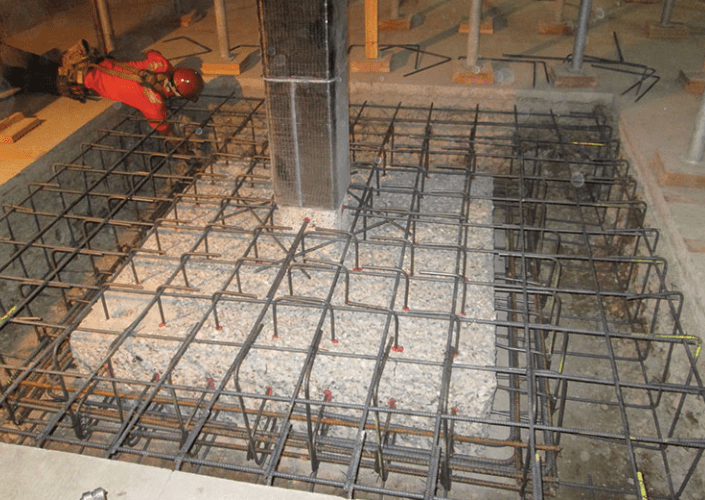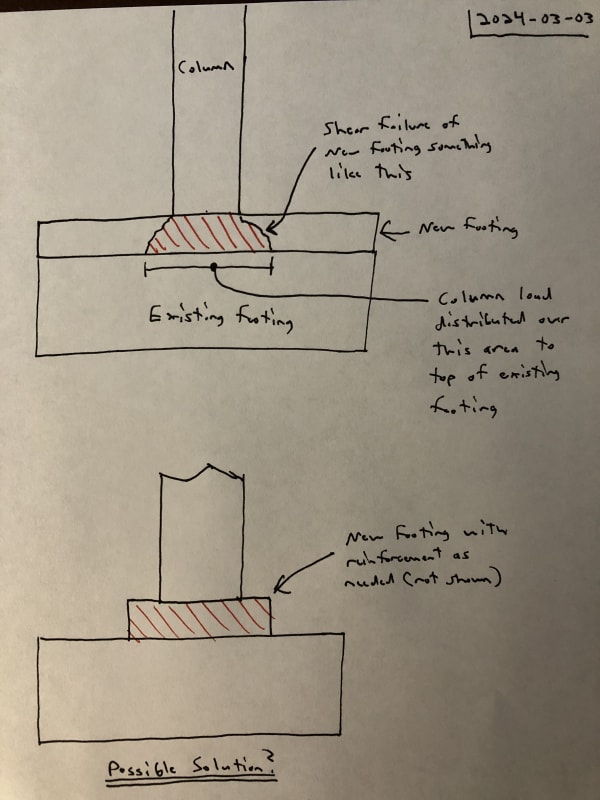[highlight #FCE94F]I agree that replacing the footing is absolutely the first choice. However, I know how hard it can be to make that happen given the individual details of a project, the pace, and personalities involved.
[/highlight]
What exactly is causing your iso-footing to fail? Is it flexural shear or two way shear.
abdallah hamdan said:
punching shear failure will occur
Punching shear is two-way shear. It is influenced by the critical perimeter of the column. In theory, increasing the column will increase the critical perimeter and provide you with a larger capacity.
So this leads me to believer your failure is NOT punching shear, which I believe you confirm in your next post.
abdallah hamdan said:
making the column bigger does not solve the situation, because of one-way shear, its more than the footing capacity
This sounds like your flexural/one-way shear, which you're saying here is the governing failure.
Potential solution:
In either case, have you considered increasing the overall bearing area of the footing? I know this solution might get some kick-back from other participants on this forum (que the angry villagers with pitchforks and torches
![[flame] [flame] [flame]](/data/assets/smilies/flame.gif)
)
I have been able to successfully do this on projects before where foundations were not already heavily loaded... and demolishing existing footings would cause an owner/developer mutiny that would severely impact the design team. You have to weigh these things out and make your professional decision.
The idea is to pour an additional band/apron, concrete lip... whatever you want to call it, and increase the overall area of the foundation. Your location of critical one-way shear will remain the same but your demand value should decrease.
You'll have to watch out for developing the reinforcing for the new extended band. I've used drilled and epoxied dowels so developing the bar doesn't become a tail chasing exercise with trying to lap develop the existing reinforcing. You'll have to choose placement carefully so as not to foul with the existing rebar placement.
Check your shear friction and manufacturer literature for your epoxy. Also make sure your primary flexural steel at the location of critical flexure (located in your original footing) is still adequate.

![[flame] [flame] [flame]](/data/assets/smilies/flame.gif) )
)
